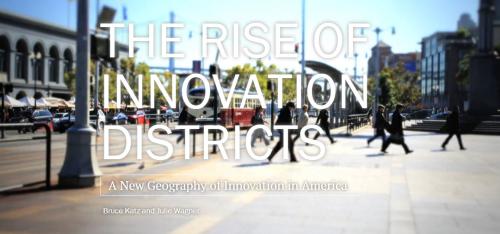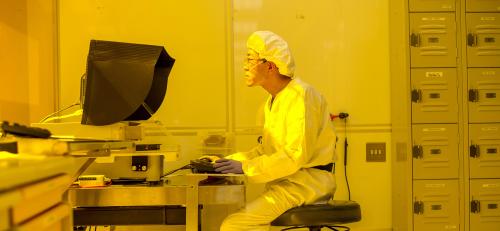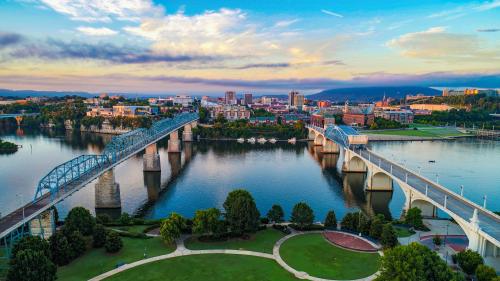Philadelphia’s innovation economy is strong, but city leaders can do more with its existing assets to compete globally and benefit local communities, according to a new report from the Anne T. and Robert M. Bass Initiative on Innovation and Placemaking at the Brookings Institution.
The culmination of an 18-month study, “Connect to compete: How the University City-Center City innovation district can help Philadelphia excel globally and serve locally” examines the role of the innovation district within University City and Center City Philadelphia as a regional economic hub and as a key part of Philadelphia’s efforts to become a world-class innovation city.
Innovation districts are dense engines of economic activity where research-oriented anchor institutions, high-growth firms, and tech and creative startups exist within an amenity-rich residential and commercial area. Stretching from 17th Street to 43rd Street along the Market Street corridor, and south along the Schuylkill River to Grays Ferry, the 1.5 square mile innovation district in University City and west Center City is perhaps the most significant innovation hub among several in the Philadelphia region.
 The innovation district in the University City-Center City area of Philadelphia [Photo Credit: Google Earth]
The innovation district in the University City-Center City area of Philadelphia [Photo Credit: Google Earth]
The sixth-largest metropolitan area in the country, Philadelphia ranks among the top 10 metros based on its total annual amount of public and academic research expenditures. However, it underperforms on several key metrics given its size and assets. To improve its economic competitiveness, and grow more firms and jobs, the region needs to better leverage and align its strengths.
To this end, the report recommends the innovation district’s stakeholder anchor institutions, corporations, and civic leaders establish an Innovation Council— a leadership group, likely housed at the Greater Chamber of Commerce for Greater Philadelphia, with the ability to bring diverse industry, public-sector, and civic stakeholders together to drive innovation, inclusion, and placemaking in the district and beyond.
To start, this council should undertake:
- A series of initiatives aimed at growing the city’s advanced industry clusters, starting with precision medicine. The first area of focus should be a Precision Medicine Catalyst Initiative, a central organizing force that has the ability to pool resources to improve the region’s significant research and commercialization capacity in cell and gene therapy.
Going forward, the Council should coordinate efforts in other next-generation technology strengths including digital health, energy, chemicals, and new materials.
- An Anchor Firm Entrepreneurship Initiative that leverages the resources of anchor technology firms to connect city startups with customers, support training and mentorship programs, increase access to capital, and help develop physical spaces in which startups can grow.
Elements could include a first customer program, expanded seed funding, a marketing and business attraction campaign, investments in cross-institution collaborations, and the endowment of entrepreneurially focused professorships.
- An expansion and coordination of anchor-based skill-building, education, and procurement initiatives could help prepare and connect low income residents from surrounding communities to district jobs; and direct anchors’ collective purchasing power to drive local business development.
- Form a connected-corridor taskforce for University City–Center City focused on forging a stronger connection between the region’s largest employment hubs and the major innovation assets within them. The taskforce should start by assessing all existing land use plans and proceed with a goal of improving vibrancy and multi-modal mobility.
Our research shows Philadelphia’s chance of becoming a top-tier city—with the attendant firms, jobs, revenues, and innovations that status would bring to the city and region—cannot hinge on individual acts or institutions. Given its assets and the progress it has already made, it is clear Philadelphia can rise to this collective challenge. With federal and state funding receding and the next-generation technologies that will determine the competitive cities of the future in rapid development, now is the time for Philadelphia’s leaders to fulfill the city’s full potential.
The Brookings Institution is committed to quality, independence, and impact.
We are supported by a diverse array of funders. In line with our values and policies, each Brookings publication represents the sole views of its author(s).




![An aerial view of the Philadelphia innovation district [photo credit: SHoP Architects/West 8]](https://www.brookings.edu/wp-content/uploads/2017/05/philadelphia_idreport_webbanner001.jpg?quality=75&w=1500)






